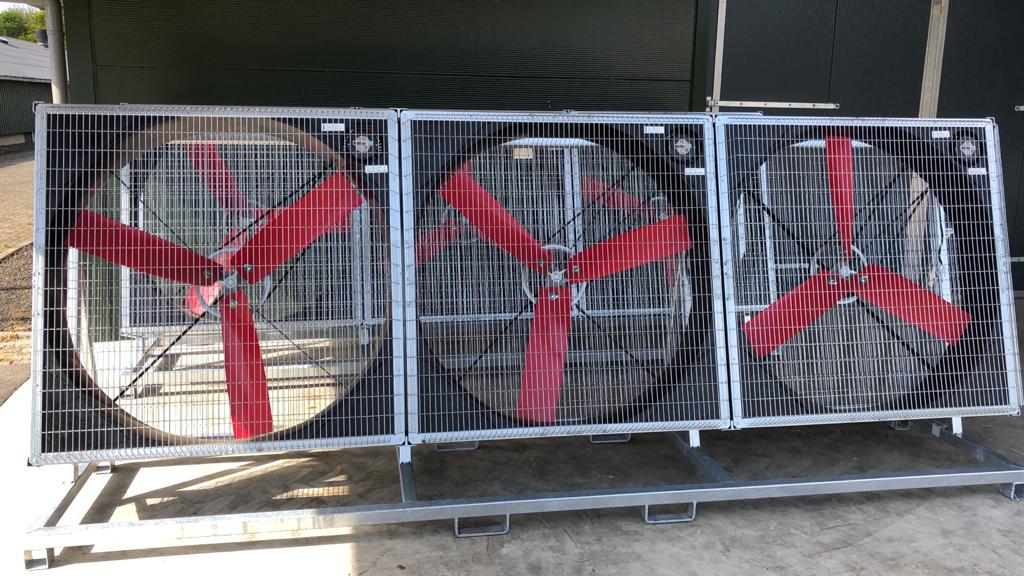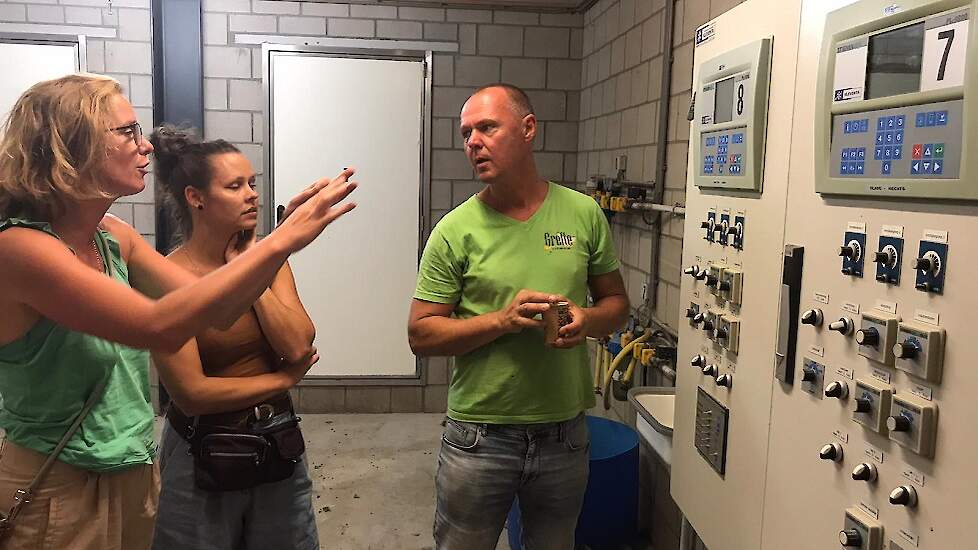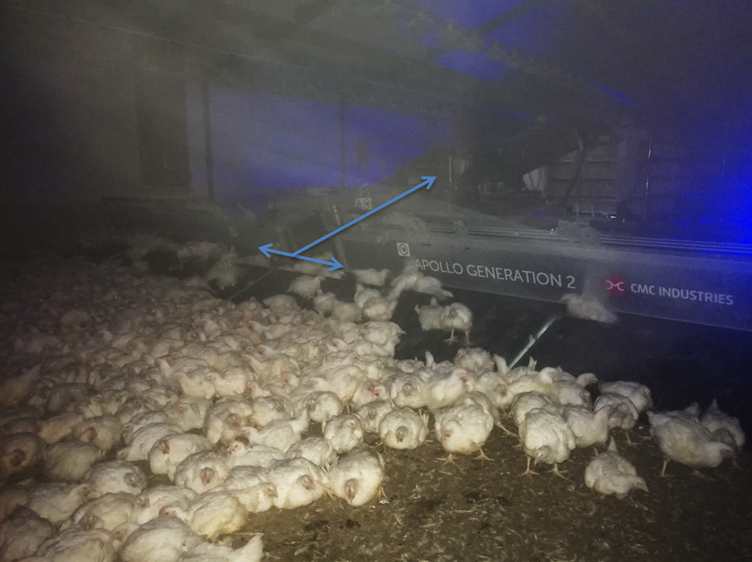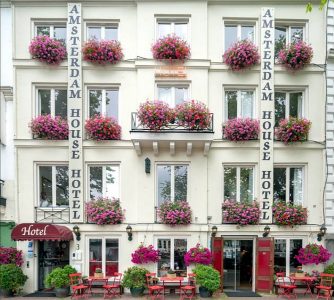Today we observed the catching and loading of broilers at Grefte poultry farm in Zieuwent. Jeroen van den Hurk, poultry sector manager at Rabobank, invited us to join Paul Grefte, owner of an innovative broiler farm. Paul wanted to show us a number of innovations on his farm.
In order to reduce heat stress in broilers, they were loaded in the evening and at night. Alongside the poultry trucks were large ventilation walls to provide chickens with fresh air while waiting. Paul Grefte had these ventilation walls built especially for the summer period. The ventilators had very high power; even at the back of the truck you could feel the wind.

In the barn, the incoming air is cooled with groundwater, through a pipe system in the wide cavity wall at the side of the barn. By means of valves it is automatically regulated how much cool air enters. The air entering the barn indeed felt cool. Paul showed that the temperature in the barn is now over 5 degrees cooler during the day than outside. According to him, this is not only better for the welfare of the chickens, but also ensures that they grow faster. Furthermore, a pipe network has been constructed underground to store the heat produced for the winter. In this way, minimal energy is consumed.

Although the cooling system causes a significant drop compared to the outside temperature, we still saw a number of chickens breathing with open beaks (a symptom of mild heat stress). We are therefore worried about the chickens housed in sheds where there is no cooling system.
The Apollo Generation 2 catching machine was used to catch the chickens. The chickens are “scooped up” on a conveyer belt and then transferred to the transport containers via a small passageway. The machine was set on low speed so the catching went relatively quiet.

In addition, the passageway of the Apollo Generation 2 (see blue arrows) is wider than the previous Apollo Generation – allowing more chickens to enter at the same time and therefore the belt speed could be reduced.
To improve the fire safety of the broiler sheds, Paul came up with the smart solution to place the control equipment for electrical installations (where fire often starts) in a shipping container, next to the sheds. Because of this, the risk of fire spreading is minimized.
Finally, we discussed the killing of sick and injured broilers, which is done on many farms by breaking the neck. Next month Paul Grefte and Eyes on Animals will go to Anoxia – a company that is developing more humane euthanasia methods using nitrogen foam to see if this is something for his company.
We are impressed by the innovations at Grefte. Paul Grefte is clearly progressive in in finding solutions to problems regarding heat stress and fire safety – which will lead to improvements in animal welfare.
However, Paul still uses fast-growing broilers. We believe that, due to their genetics, fast-growing broilers have an very poor quality of life. Broilers are young animals, who want to run, play, scratch, take dust baths – but because of their fast growth and heavy breast tissue they are severely limited to perform their basic needs. After a few weeks they can’t do much more than sit, take a few steps, eat and drink. Moreover, chickens are naturally forest animals – they like to sit high up in the trees and scratch for hours on end in search of food. But in the sheds there is little living space (20-21 chickens per m2) and no enrichment. We therefore hope that Paul (and other broiler companies) will eventually switch to a slower-growing breed of chicken and enrich the sheds, for example with bales of straw, dirt bins and trays. See for example this broiler shed in Norway:
https://www.facebook.com/animalia.norge/videos/487449082018570
We would like to thank Paul Grefte for allowing us access to his farm and for developing and implementing important improvements for both the environment and animal welfare.

